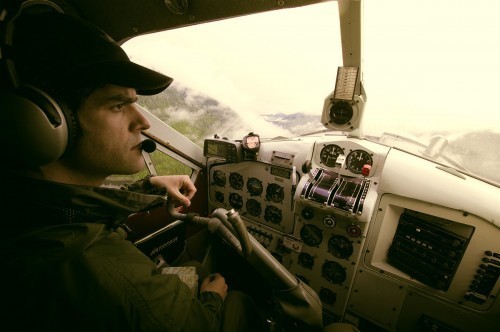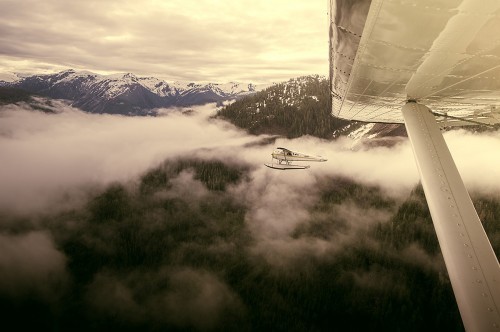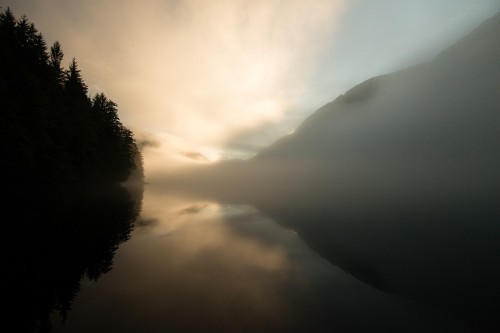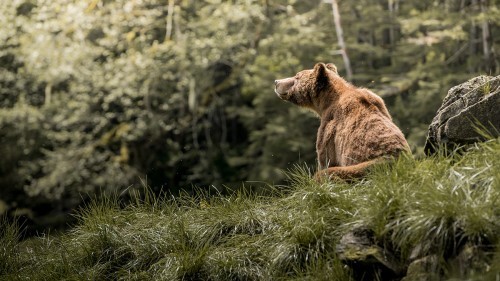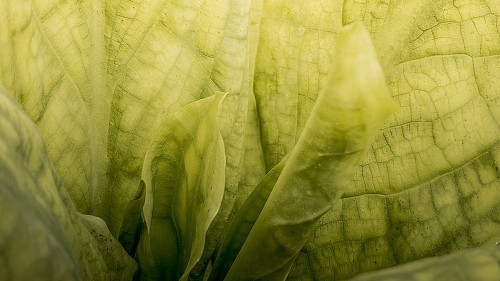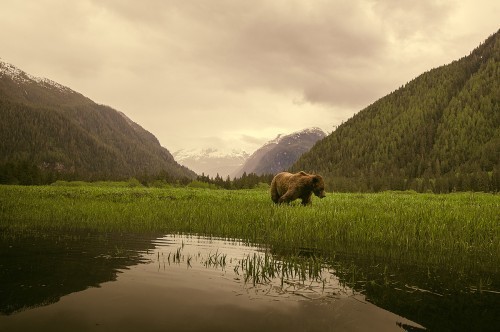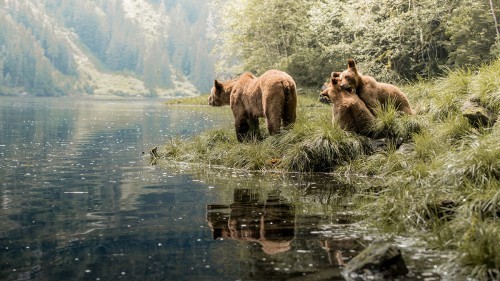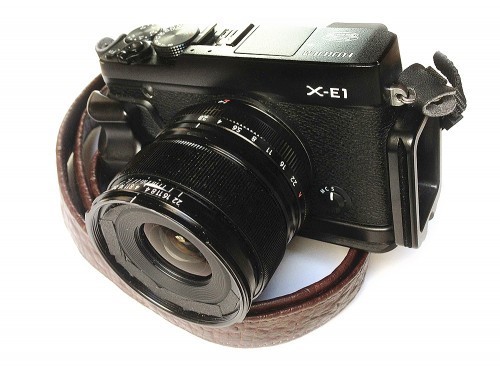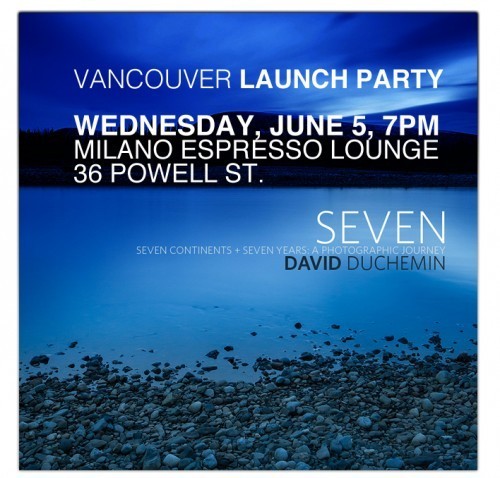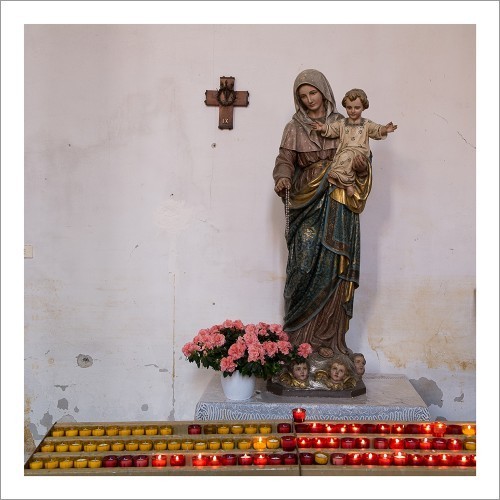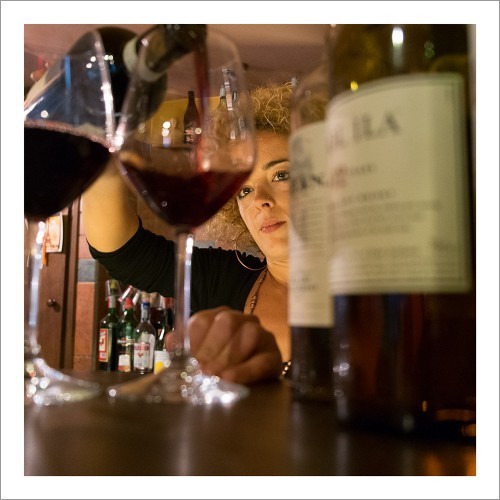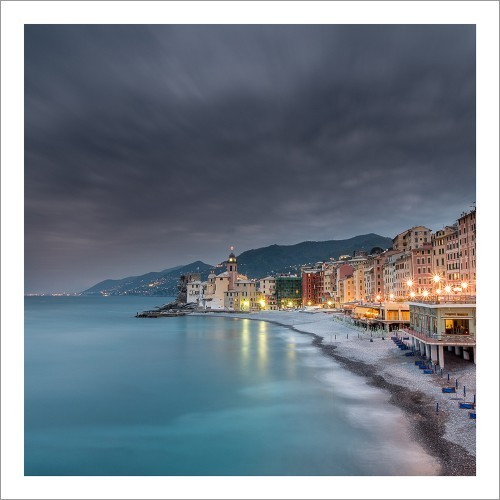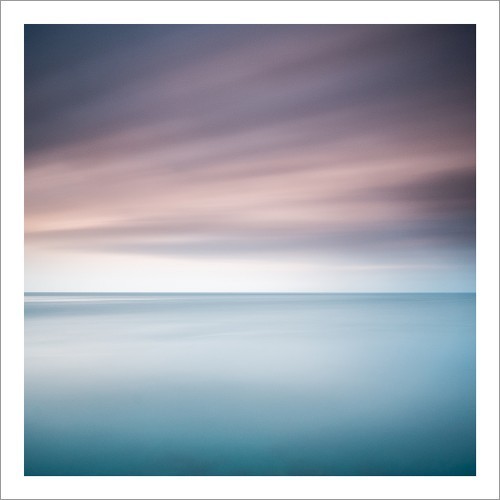David duChemin's Blog, page 36
May 22, 2013
Khutzeymateen
Just off the float plane from a week in British Columbia’s Khutzeymateen. I’ll write more later, and put up another photograph or two, but wanted to drop a postcard your way. I’ve pulled these straight out of Lightroom on the 11″ MacBook Air, so they’re rough images yet, but man was this a mind-blowing week. One of the most intimate encounters I’ve had with the wilderness. Felt like I was on sacred ground and holy waters the whole time. Good to be back, but I miss the bears already. My new friends on the Ocean Light 2 as well. I’m back with them photographing the Gwaii Haanas (formerly the Queen Charlotte Islands) in July and it’ll feel like a long time between now and then.
While I was gone, if you missed it, we published Vision Is Better 3, the third in the series. If you like this blog, you can get the best of its content, plus some new material, and much better images, all curated in a beautiful package for $5, but there’s a bundle of all three books, for only $10. More information on this post about it.
May 20, 2013
Just Released: Vision Is Better 3
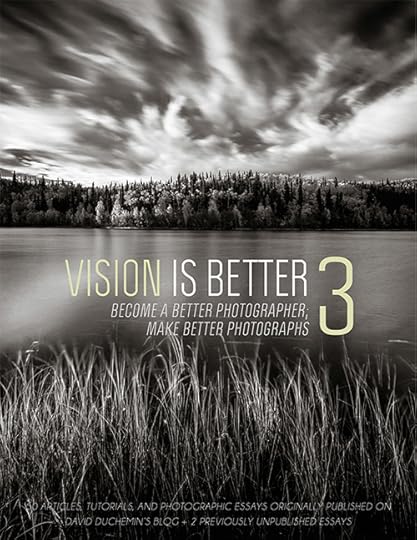
Over the course of the year I put what I hope is a solid body of great education on this blog – essays and tutorials and photographs from my journey in this craft that I hope will teach and inspire you wherever you are in your own photographic journey. Vision Is Better 3 is the third time we’ve compiled that material into what’s become one of Craft & Vision’s best-selling eBook series. Re-edited, and put together with much larger photographs, Vision Is Better 3 gives you offline access to 145 pages of beautifully laid out material, 52 articles, including two previously unpublished articles (Don’t Get Ahead of the Muse, and Simplify, Simplify) and expanded “Postcards From…” features.
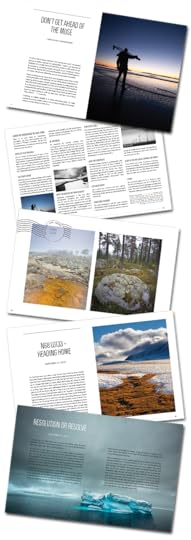
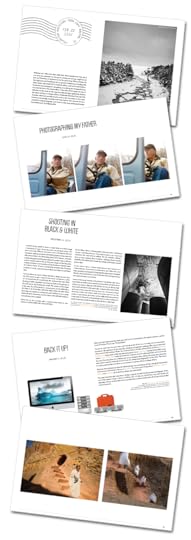
We don’t do the hard-sell around here, so I’m happy to tell you most of the material in this eBook is available right here on the blog completely free. If you want to dig for it, there are years of free material, and it’ll always be free to you. But if you want something a little more curated, with bigger photographs, and you want it sitting on your tablet or laptop even when you’re offline, this is great value.
Vision is Better 3 is only $5. It picks up where Vision Is Better 2 left off, and if you’ve not purchased either of the first two books, you can get all three in a bundle for $10. That’s about 4 years of content for the price of a couple lattes and these won’t make you feel bloated and gassy.
Buy 5 or more titles (bundled titles count as one product) from the Craft & Vision store by May 26th at 11:59 PM (PST) and use discount code VIBTHREE20 and you’ll save 20%.
May 14, 2013
The Magic Wand
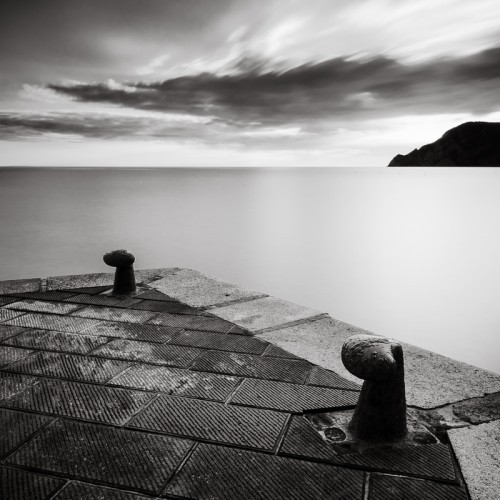 This weekend I posted about my experience with the new Fuji XE-1. It’s a great camera. It’s capable of making some beautiful photographs. But I didn’t say the one thing I most wanted to. My heart was screaming to say it and got over-ridden by my mind and it’s always a mistake not to listen to my heart. I wrote it because it might be helpful to some. I wrote it because these kinds of posts get traffic. And now I’m writing this one, knowing I need to say it again, traffic stats be damned.
This weekend I posted about my experience with the new Fuji XE-1. It’s a great camera. It’s capable of making some beautiful photographs. But I didn’t say the one thing I most wanted to. My heart was screaming to say it and got over-ridden by my mind and it’s always a mistake not to listen to my heart. I wrote it because it might be helpful to some. I wrote it because these kinds of posts get traffic. And now I’m writing this one, knowing I need to say it again, traffic stats be damned.
The Fuji XE-1 doesn’t matter. There’s a bandwagon forming around this camera, and I hate bandwagons. They never seem to gather around things that truly matter.
I get asked about gear all the time. Once in a while I write something about it. And yes, gear matters in the sense that without it we’d be drawing with pencil and paper. Certain photographers have specific needs, and faster, bigger cameras can meet those needs. But you know what? In a year or two there will be a new, hot, camera. In a couple years, many of us with today’s greatest camera will be swapping it out for something new, convinced by the voices in our heads that we need it if we’re going to make photographs as good as Ansel Adams, Henri Cartier-Bresson, Avedon, Karsh, Galen Rowell, or whomever. All of whom, by the way, didn’t have cameras remotely as sophisticated as we have now. All of whom created iconic work on the cameras we now pass over in our lust for something new, for some magic wand, addicted as we are to cameras and not the photographs they make.
I’ve been saying for years that there is no magic wand. I was wrong. There is. It’s making photographs. Thousands and thousands of photographs. It’s being honest with ourselves and not trying to be someone else. It’s giving the craft time to grow and not expecting to master something overnight that others have taken a lifetime to do. It’s studying photographs and knowing what they provoke in you and why. It’s looking to painters and designers and others who work in two dimensions and learning from them. It’s relentlessly looking for light, lines, and moments. Some of us can do astonishing things with 12 strobes, and can HDR the crap out of 16 frames taken on a $40,000 Hasselblad, but still can’t make a photograph anyone truly gives a damn about. The internet is full of them: technically perfect, frequently lauded with “Nice capture, man,” and utterly forgettable. I think I’d weep if the best you could say about my photographs is that they’re tack sharp and perfectly exposed.
We’re all looking for the perfect little box with a hole in it, and they’re sexy little things, I’ll give you that. The best ones feel good in the hands and I’m the first one to tell you I love the tactility of this craft, but Leica’s red dot isn’t going to make my photographs any better. Thinking differently will do that. Wrestling with new ideas and compositions will do that. Replacing the gear catalogs and popular magazines that are packed with ads – voices telling you you can “shoot like a pro” with the newest camera – with books of actual photographs, will help you do that. Putting down your fancy D4 and picking up a completely manual 35mm camera for a while might do that, too. And yes, a small mirrorless camera like the new flock of Fujis might do that for you. Or it won’t. If you aren’t making beautiful, honest, photographs with the camera you have now, you won’t do it with the one you’re lusting for. I promise.
I know I’ve preached this sermon before. I know it gets old. I also know it might get read as a rant, but it’s truly not. The camera collectors will collect, with no interest in making something that moves hearts or opens eyes, and God bless’em if that’s what makes them happy. But most of you, at least the ones reading this, want that. So do I. We want it so badly it hurts, and the long years ahead to mastery feel like a joy on the rare days they don’t feel so damn frustrating. But things get cloudy sometimes and it doesn’t help that people like me once in a while tell you how great this new camera or that new lens is. And those people – including me sometimes – need also to be reminded that none of it really matters. Just get a camera that feels good in your hands, does what you need it do without getting in the way, and then go make photographs. How new, shiny, sexy, small, large, or European, your camera is doesn’t make a hill of beans’ worth of difference to how it moves the human heart. Astonishing work is created on old lenses, Polaroids, Holgas, old Digital Rebels, and the venerable AE-1. You won’t impress anyone, other than other photographers, with your list of L-lenses. The only thing most of us truly care about are the photographs. The rest is irrelevant. Don’t let it sidetrack you. Envy, gear-lust, and the lie that better gear will make more compelling photographs just pulls your mind and heart from making art. Beauty can be made with the simplest of means.
May 12, 2013
Italy and the Fuji XE-1
I spent three weeks in Italy this month, making photographs, teaching, and looking for great food and wine. I took with me the Fuji XE-1 and two lenses, the 14mm and the 18-55mm, both from Fuji. I took them because I wanted a light kit, because for places like Venice I just won’t walk around all day if my gear is too heavy. The Fuji was perfect. But I also wanted to give myself some new creative constraints and I’d heard such good things from others, mostly about the Fuji’s sensor, that I had to see if it would work well for me. So I took a couple 64GB SD cards, slapped on a Really Right Stuff plate with grip (the BXE1 set here), and took it to Europe.
What I expected was a good camera for street and candid photography and a mediocre camera for landscapes. I expected light, but at the expense of useability. And frankly, I expected a little of the frustration I’d had with some of the quirks of Fuji’s first foray into this category: the X100, which I struggled to really love while everyone else lauded it. I came home a convert, though with some caveats. Here, in no particular order, are some of my reactions:
I loved the size and handling. It’s a little light, but with the Really Right Stuff L-plate and grip, it was perfect. Hardly noticed it was there. Except when it was falling off my shoulder. The strap Fuji provides is too small for me. In the end I had a shoe-maker take the Fuji strap apart and make me a sexy new one that’s about 12 inches longer, out of ostrich leather. It’s crazy sexy and I can now wear it bandolier-style the way I like.
The lenses were fantastic, especially the 14mm which despite the initially confusing focusing clutch (I have to do WHAT to make this lens work?!), has depth of field markings on the lens making it easy to set the lens to f/11, find my hyperfocal distance and shoot without focusing. I love that. As for quality, they’re crazy sharp. The 14mm also has a dedicated manual aperture ring on the barrel, which I also love, but it moves far too smoothly for me and I’d constantly find my aperture changed. A strip of gaffer tape that holds down the ring will do, but I shouldn’t have to. Rubber band might work too.
The sensor is amazing and I shot at crazy-high ISO without thinking twice about it, in part because I like the look. Very film-like to my eye.
I love the ability to crop in-camera to 1:1 or 16:9, from the default 2:3, but I don’t see why I can’t do 4:5. Or, for that matter, a custom size. I shot on 1:1 for the whole trip, because it forced me to compose with a different frame and I find those constraints very freeing and energizing. I’m pretty strict with myself about getting it right in-camera, but because I shoot in RAW I can always change my mind or slightly re-crop.
I love the ability to shoot in B&W, and because it’s an electronic viewfinder, I can see my scene that way. I shot in B&W the whole trip, and even though I will render most of the work in colour, the ability to see without colour and focus on the moment and the lines is fantastic. Again, because I shoot in RAW, I can do what I like with the file and I’m not stuck with only B&W images as I would if I shot only in JPG.
I love the manual shutter and EV compensation dials, though like the aperture ring on the 14mm, the EV comp dial moves a little too freely for my taste.
Nice to have in-viewfinder histogram and virtual horizon.
The X-Pro 1 forces you to use an old school cable release, but the XE-1 has an available electronic one. Setting the XE-1 to Bulb and locking the release activates the shutter and shows a timer on the display so I can watch my long exposures without staring at a tiny LCD on the release itself. I love that. Add a smaller Lee adaptor and it takes my full landscape set-up. Looks a little goofy, but I’ve given up trying to look cool and be a photographer at the same time.
The writing on the bezel surrounding the lens element reflected in my filters. Lens makers should know better. This is a silly convention. I taped mine up. It’s ugly but it works.
Quirks? Not many. I love the Q menu for fast access to menu items. The means by which focus points are changed is cumbersome and requires me to do some weird gymnastics with my fingers. I’d love to see that changed. It’s not the fastest start-up and sometimes the focus hunted a little, but I expected worse, so wound up pleasantly surprised. The XE-1 shoots bursts up to 6fps but takes forever to process and I’m still scratching my head on how to view the sequences. Why not just let me look at them as sequential images, Fuji? Very odd.
There’s an M-mount adaptor available for the XE-1 which means the availability of lenses is amazing, though the price-tag won’t be cheap. Leica isn’t known for being inexpensive.
The bottom line for me is: do I enjoy using the camera, does it stay out of my way as much as possible, and how good are the photographs? We’ll all answer these kinds of questions differently, but for me the answer were, Yes, Mostly, and Fantastic. I love this thing. Will it replace my DSLR? Sometimes, yes. I’ll use it in Oaxaca for Day of the Dead. I’ll use it in Ethiopia for Orthodox Christmas. And I’ll use it beside my D3s and D800 on other trips, like my upcoming grizzly bear trip or my safaris. If you’ve been contemplating a smaller camera, you owe it to yourself to try the XE-1. It won’t help you see light, lines, or moments any better, but it’s capable enough to capture them beautifully.
If you want to see some of the images from this camera, and you’ve not already seen the postcards I published last week, you can see them on this post, this post, and finally this post.
May 10, 2013
SEVEN: Vancouver Launch Party
On Wednesday, June 5th, I’m inviting you to join me as we take the wrappers off my first art book: SEVEN. It’s a small event, just me (and my fantastic team), my new book, and a chance to have a glass of wine or cup of coffee in Vancouver’s fantastic Gastown.
If you wanted a chance to pick up a book locally without the shipping charges, or for me to personalize it for you, or just a chance to come hang out without spending a penny, then this is that chance. The only catch is that our venue, one of my favourite coffee shops, isn’t going to grow with the size of the crowd, and not knowing how many people are coming would put Corwin into the fetal position in a corner, so we’re ticketing (completely free, but bring a few bucks for a drink) the event. In other words: space is very limited and you need a reservation. You can do that right here with the link above.
I’d love to see you there. Books will be on-hand and I’ll be resting my left hand so it’s ready for signing the night away. Come. I’d love to meet you and share this with you.
May 9, 2013
Final Postcards from Italy
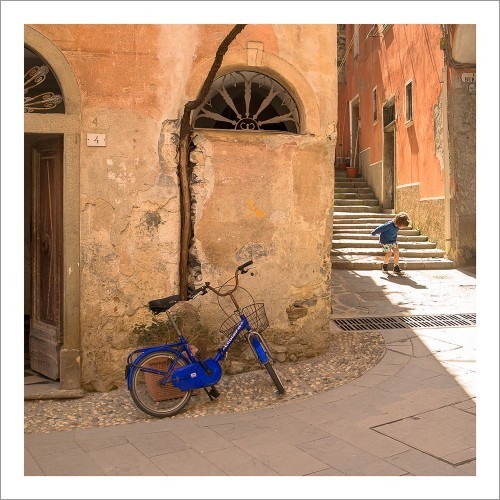 A few final photographs from my recent trip to Italy (I posted others last weekend). The image above is one of my favourites, and still makes me chuckle. I’d been standing there waiting for a moment and talking to friends. I’d made a comment about the need for photographers to remain observant and then the discussion moved on to the blue bike. Someone said how much they loved the tree growing out of the wall and I looked around confused – what the hell was she talking about? - until I noticed it. Right behind the bike. So much for being observant. Apparently I’m one of those “do as I say, not as I do” kind of teachers. Oops.
A few final photographs from my recent trip to Italy (I posted others last weekend). The image above is one of my favourites, and still makes me chuckle. I’d been standing there waiting for a moment and talking to friends. I’d made a comment about the need for photographers to remain observant and then the discussion moved on to the blue bike. Someone said how much they loved the tree growing out of the wall and I looked around confused – what the hell was she talking about? - until I noticed it. Right behind the bike. So much for being observant. Apparently I’m one of those “do as I say, not as I do” kind of teachers. Oops.
As promised, I’ve still got an article coming about the Fuji XE-1 I used on this trip, but that’s still to come. Don’t hold your breath for a review, I don’t do those well. But if you want a reaction (spoiler: I love this camera!) then I’ll be posting something more complete about it within the week or so. In the mean time, Issue Three of PHOTOGRAPH is now out and keeps getting better. There are still spots available for both The Created Image seminar in Vancouver on July 11-12 and The Path to Pro evening on July 11. I’ve got bags to pack before I catch a float plane in Prince Rupert and head out on the Ocean Light 2 to British Columbia’s Khutzeymateen to photograph the grizzlies. Stay tuned!
May 6, 2013
PHOTOGRAPH, Issue 3
Today we released the most recent issue of PHOTOGRAPH, our digital magazine for creative photographers. As always it’s packed with incredible portfolios and Q+A, this time from Hengki Koentjoro, Dave Delnea, and Kevin Clark. They’re all amazing but if you’ve not seen Hengki’s work, you need to, it’s breathtaking. And there are the usual great columns from people like Martin Bailey, Nicole S. Young, Kevin Clark, John Paul Caponigro, and all our regular contributors, as well as a featured article from me about my recent work in Northern Kenya. It’s getting better and better all the time, and we’re so proud of this one.
Download the Table of Contents.
 If you’re subscribed (which gives you a 25% discount) you’ll get this one delivered to you, but if you’ve never seen an issue of PHOTOGRAPH, my team’s put together something truly beautiful, educational, and high-value, and all without ads. You can get your copy of Issue 3, or subscribe, today.
If you’re subscribed (which gives you a 25% discount) you’ll get this one delivered to you, but if you’ve never seen an issue of PHOTOGRAPH, my team’s put together something truly beautiful, educational, and high-value, and all without ads. You can get your copy of Issue 3, or subscribe, today.
PHOTOGRAPH, Issue Three is available now through Craft & Vision, as a PDF download, for USD $8. Because we’ve always given discounts, we’re offering a 4-issue subscription for USD $24, which means you buy 3 issues, and get one free.
May 5, 2013
May Desktop Wallpaper
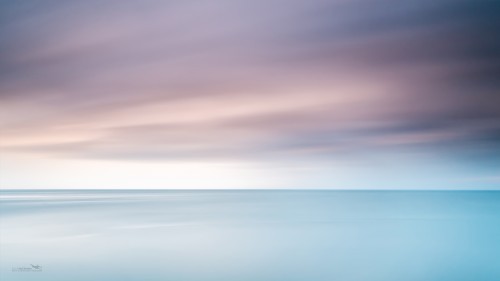 One evening in Camogli, Italy. Just my Fuji XE-1, a Lee Big Stopper and 3-Stop Grad on a tripod pointing at the horizon. 14mm @ f/11. 210 seconds. ISO 250. No significant adjustments in the digital darkroom. Just amazing light on amazing water.
One evening in Camogli, Italy. Just my Fuji XE-1, a Lee Big Stopper and 3-Stop Grad on a tripod pointing at the horizon. 14mm @ f/11. 210 seconds. ISO 250. No significant adjustments in the digital darkroom. Just amazing light on amazing water.
This is a downloadable desktop wallpaper and should look great on anything up to 30 inches. Enjoy. Yesterday I posted a small series of photographs from Italy, if you missed them you can see them here.
May 4, 2013
Postcards from Italy
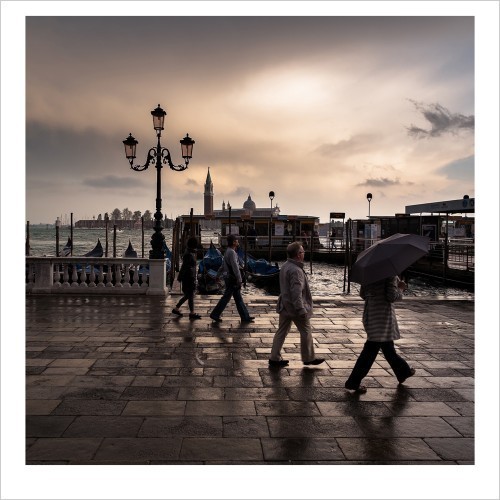
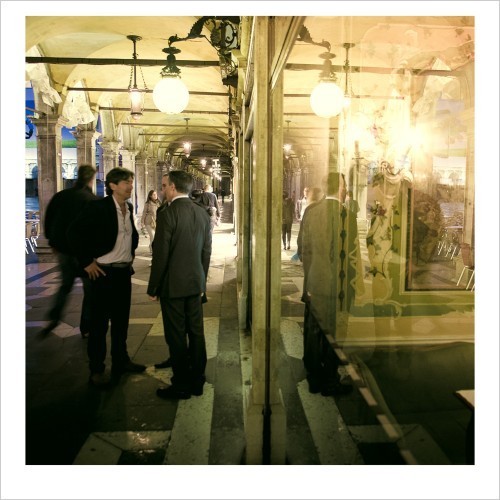
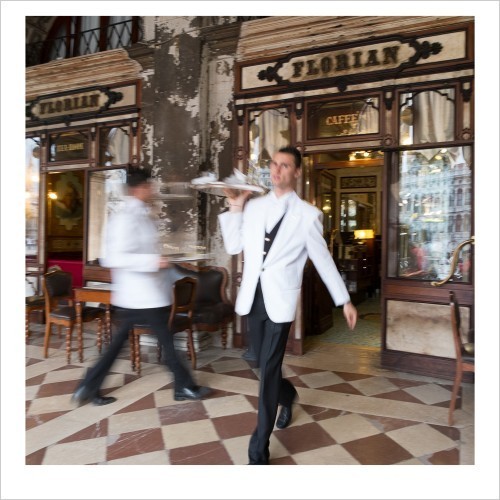
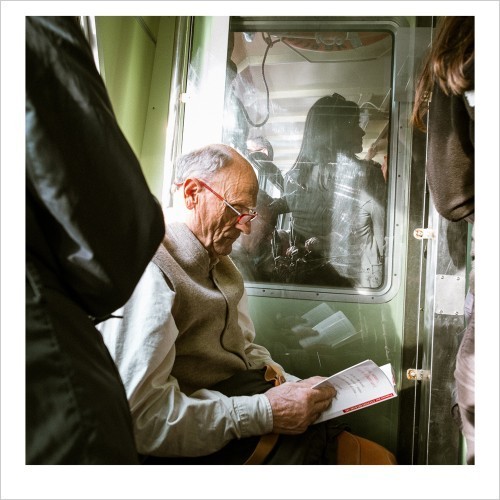
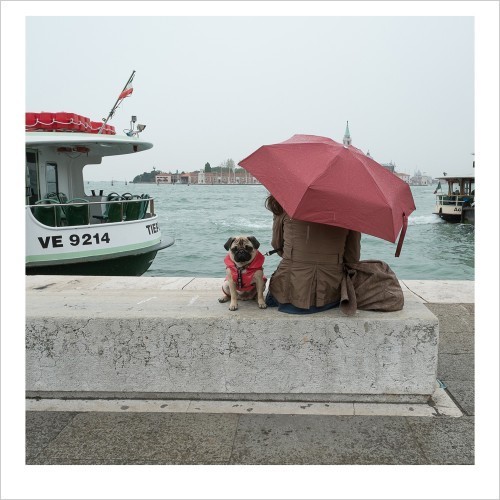
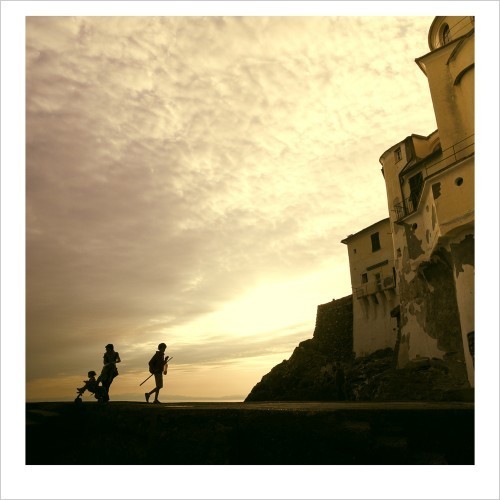
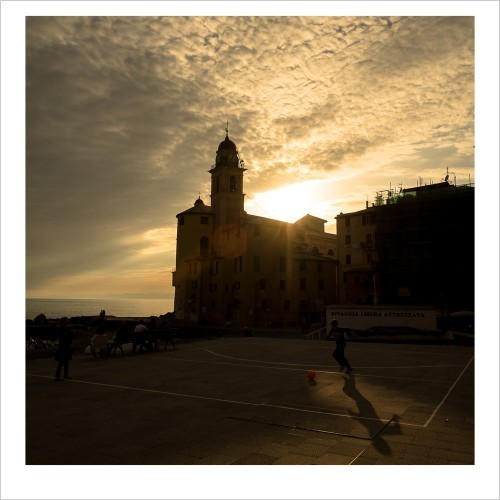 Ciao! I rolled in from Italy a couple hours ago, set my photographs to begin the export process from my laptop to my iMac, unpacked, stocked the fridge and walked out for some much needed sushi. So good to be back home in Vancouver. No matter how often I go away, coming home is sweeter each time.
Ciao! I rolled in from Italy a couple hours ago, set my photographs to begin the export process from my laptop to my iMac, unpacked, stocked the fridge and walked out for some much needed sushi. So good to be back home in Vancouver. No matter how often I go away, coming home is sweeter each time.
Now I’m crashing but after so long gone I felt like I needed to jump online and say hello and throw a couple postcards into the mail for you. Lots going on here, but for now I’ll leave you with these. All taken with the more-than-capable Fuji XE-1, and I’ll give you more of my impressions on this new camera when the dust settles a little. Thanks for holding down the fort while I was gone, and for your patience for those who left comments on articles I just haven’t had the time to reply to.
May 2, 2013
The Path to Pro
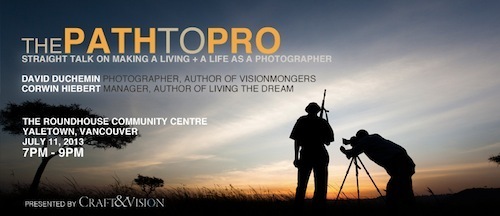
We’ve put together a special VisionMongers event for anyone wanting to become a working photographer, or those currently making the transition, or struggling. Presentations by both my manager, and the author of Living the Dream, Corwin Hiebert, and myself, for those wanting a truly candid and highly actionable discussion about making money with your photography.
This will be an honest evening about pursuing a challenging dream, and all the cards will be on the table. If you’re looking for a template or pattern to follow, this isn’t it. If you’re looking for solid advice and ideas from two guys who wake up every morning and live the dream, with all its struggles and challenges, then this will be two hours you don’t want to miss.
Participants from The Created Image seminar will also be in attendance, it will be a great night! Tickets are just CAD $40 and the event will take place 7:00pm – 9:00pm on July 11 at the Roundhouse in Yaletown (Vancouver, Canada). Space is very limited.

